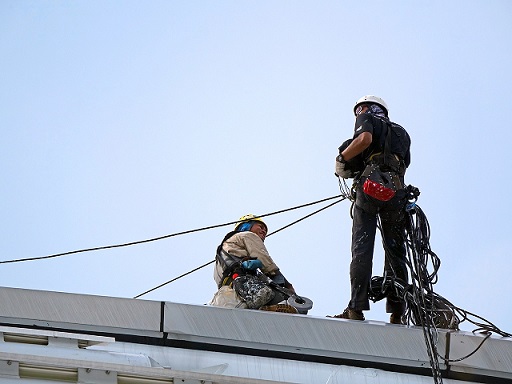
When working within the lifting industry, it is not uncommon to find certain operations requiring workers to work at height. Lifting equipment used within industries such as shipping, construction and engineering often involves significantly tall structures as well as smaller heights, both of which carry risks of harm if something were to go wrong. For this reason, it is imperative to have a height rescue plan in place to identify and avoid risks where possible and to react to problems should they ever occur. Here, we talk you through some of the things you can do to develop an effective height rescue plan.
The law and height safety
When it comes to working at height, there are very clear laws in place for people to follow. Previously, the law required that anybody working at a height greater than two metres would have to wear the correct personal protective equipment (PPE). However, the law has since changed and now states that PPE is required “where a person could fall a distance liable to cause personal injury.”
While some say this new guideline can be open to some sort of interpretation, this can be defined as:
- If you could fall from the ground level through an opening or hole in the ground
- If you will be working above the ground/floor level
- If it’s possible to fall from an edge, through an opening or a fragile surface
Creating an effective height rescue plan
Before creating an effective height rescue plan, there are several considerations you will have to make. The first is to ensure you have the correct equipment and that it has all been fully inspected before use. Another is to ensure all staff members are properly trained to use all rescue equipment in the correct way. Once these things have been put into the place, you can then make a start on creating your rescue plan, which should include the following:
- The suitability of the equipment being used
- The safety of all those that will be involved in the rescue
- The anchor points for equipment being used
- How an individual will be attached to the rescue equipment
- How the equipment will be used to move an individual
- Any other requirements for the individual involved in the process
As part of your height rescue plan, you will have to conduct a thorough risk assessment of the site before any operation can begin. You will have to inspect any hazards that could be posed by the task and evaluate the risks involved. Falls from height are one of the most common causes of fatality in the UK each year, and for this reason alone, it is crucial that you have a rescue plan in place should anything go wrong.
How SLG can help
If you’re wondering how SafetyLiftinGear can help you create an effective height rescue plan, we have an extensive range of PPE and height rescue equipment that will ensure your rescue plan is carried out in the safest and most efficient way possible. A wide selection of our equipment is available for hire as well as full purchase and can be customised to match your exact rescue needs.
Browse Our PPE Collection > Browse Our Rescue Equipment >
For more information, be sure to get in touch with a member of the SafetyLiftinGear team today by calling 0117 9381 600 or emailing sales@safetyliftingear.com!

